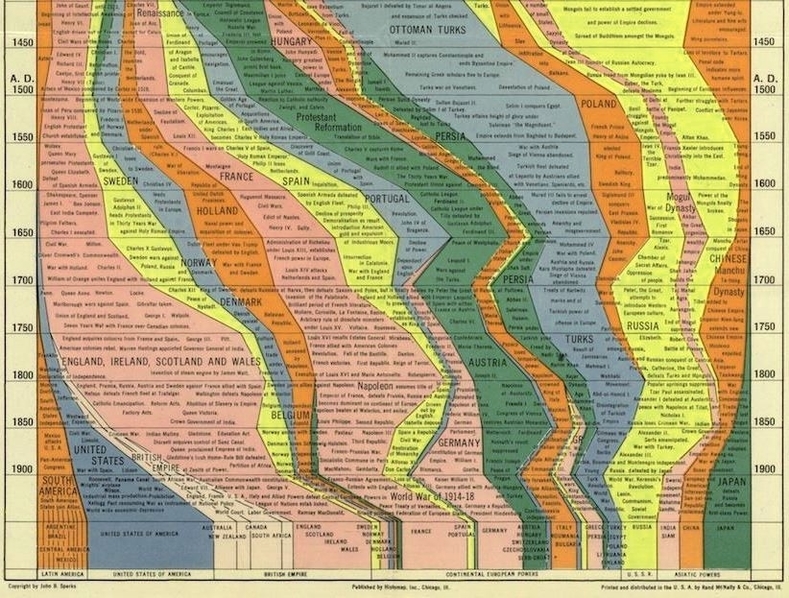
The history of world maps dates back to ancient times. The Babylonian Map of the World, etched in the 6th century B.C., is the oldest surviving world map . It depicts the worldview of Babylonians circa 600 B.C. and is centered around Babylon, the world’s most populous city at the time. The map reveals the inherent bias of mapmakers to place themselves at the literal center of the world . Other early maps served more practical needs, such as the stick and shell charts built to denote currents around islands in the South Pacific over 2,000 years ago, or the Egyptian papyrus maps that led miners through the desert in the 12th century B.C. .
The philosopher Pythagorus theorized as early as the 6th century B.C. that the Earth was round . And by 200 B.C., the scholar Eratosthenes compared the angles of shadows cast simultaneously in two different cities to calculate the Earth’s circumference . The first world atlas was created by Ptolemy in the 2nd century A.D. . It was the most influential map of the ancient world and remained authoritative throughout the Middle Ages .
Over time, errors were corrected and empty spaces were filled in, and today, much of the population walks around with a map of the entire Earth in their pocket thats so detailed you can see your own front door . Maps have been a 10,000-year journey of humans trying to understand Earth . They have changed how we see the world and have been civilization’s greatest tool .
